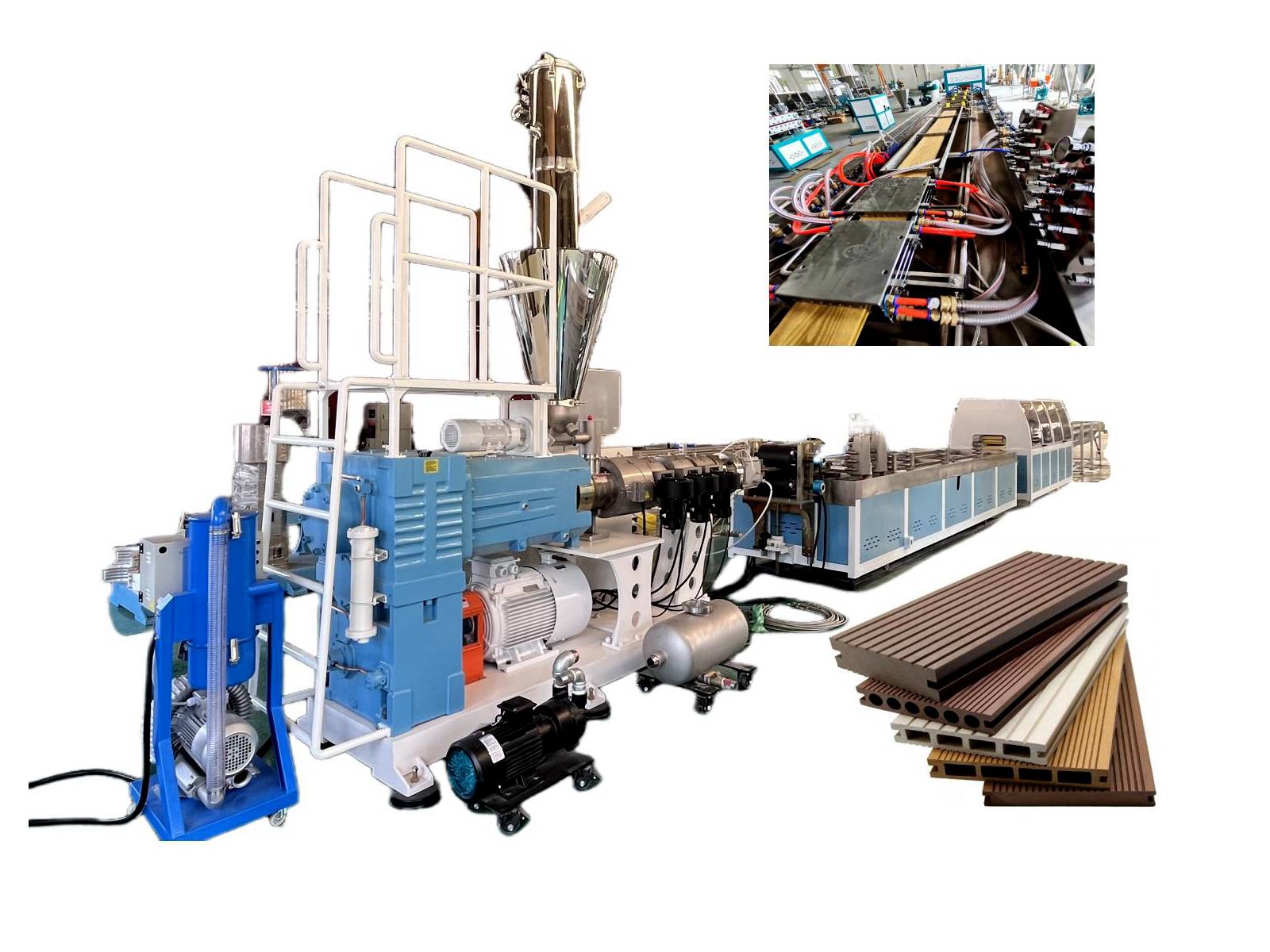Building with Innovation: Exploring the Components and Functions of the WPC Decking Production Machine
2024-05-07
Introduction:
Wood-plastic composite (WPC) decking has gained popularity as a sustainable and durable alternative to traditional wood decking. At the heart of the WPC decking manufacturing process lies the WPC Decking Production Machine—a sophisticated piece of equipment designed to blend natural fibers and plastic resin into a durable and aesthetically pleasing decking material. In this article, we'll delve into the key components and functionalities of the WPC Decking Production Machine and explore how they contribute to the manufacturing process of wood-plastic composite decking.
1. Mixing System:
At the core of the WPC Decking Production Machine is the mixing system, which combines natural fibers (such as wood flour or bamboo) and thermoplastic resin (such as polyethylene or polypropylene) to create the base material for WPC decking. The mixing system typically consists of high-speed mixers or extruders that thoroughly blend the ingredients to ensure uniform distribution and consistent quality. By precisely controlling the mixing process, the WPC Decking Production Machine creates a homogeneous mixture that forms the foundation of high-performance WPC decking.
2. Extrusion Process:
Once the WPC material is thoroughly mixed, it is fed into the extrusion system of the WPC Decking Production Machine, where it undergoes a series of shaping and forming processes. Extruders equipped with specially designed screws and dies apply heat and pressure to the WPC material, forcing it through a shaping die to create the desired profile of the decking boards. Through precise control of temperature, pressure, and extrusion speed, the WPC Decking Production Machine produces decking boards with consistent dimensions, surface texture, and structural integrity.
3. Cooling and Sizing:
After the extrusion process, the newly formed WPC decking boards pass through a cooling and sizing system, where they are rapidly cooled to set their shape and dimensions. Cooling tanks or water baths help dissipate heat from the extruded material, preventing deformation and ensuring dimensional stability. Simultaneously, precision cutting tools trim the decking boards to the desired length and width, providing uniformity and precision in the final product. The cooling and sizing system of the WPC Decking Production Machine plays a crucial role in achieving accurate sizing and consistent quality in the finished decking boards.
4. Surface Treatment and Finishing:
To enhance the aesthetic appeal and performance of WPC decking, the WPC Decking Production Machine may incorporate surface treatment and finishing processes. These may include embossing, brushing, or sanding to create texture and mimic the appearance of natural wood grain. Additionally, UV-resistant coatings or additives may be applied to protect the decking boards from fading, discoloration, and degradation due to sunlight exposure. By incorporating surface treatment and finishing options, the WPC Decking Production Machine enhances the durability, aesthetics, and longevity of the finished decking products.
Conclusion:
The WPC Decking Production Machine represents the pinnacle of innovation in the manufacturing of wood-plastic composite decking. By integrating advanced mixing, extrusion, cooling, sizing, and finishing technologies, this sophisticated piece of equipment transforms raw materials into high-quality decking boards that offer the perfect blend of sustainability, durability, and aesthetics. As the demand for eco-friendly and low-maintenance decking solutions continues to grow, the WPC Decking Production Machine plays a vital role in meeting the needs of consumers and builders alike, providing a sustainable and versatile option for outdoor living spaces.



